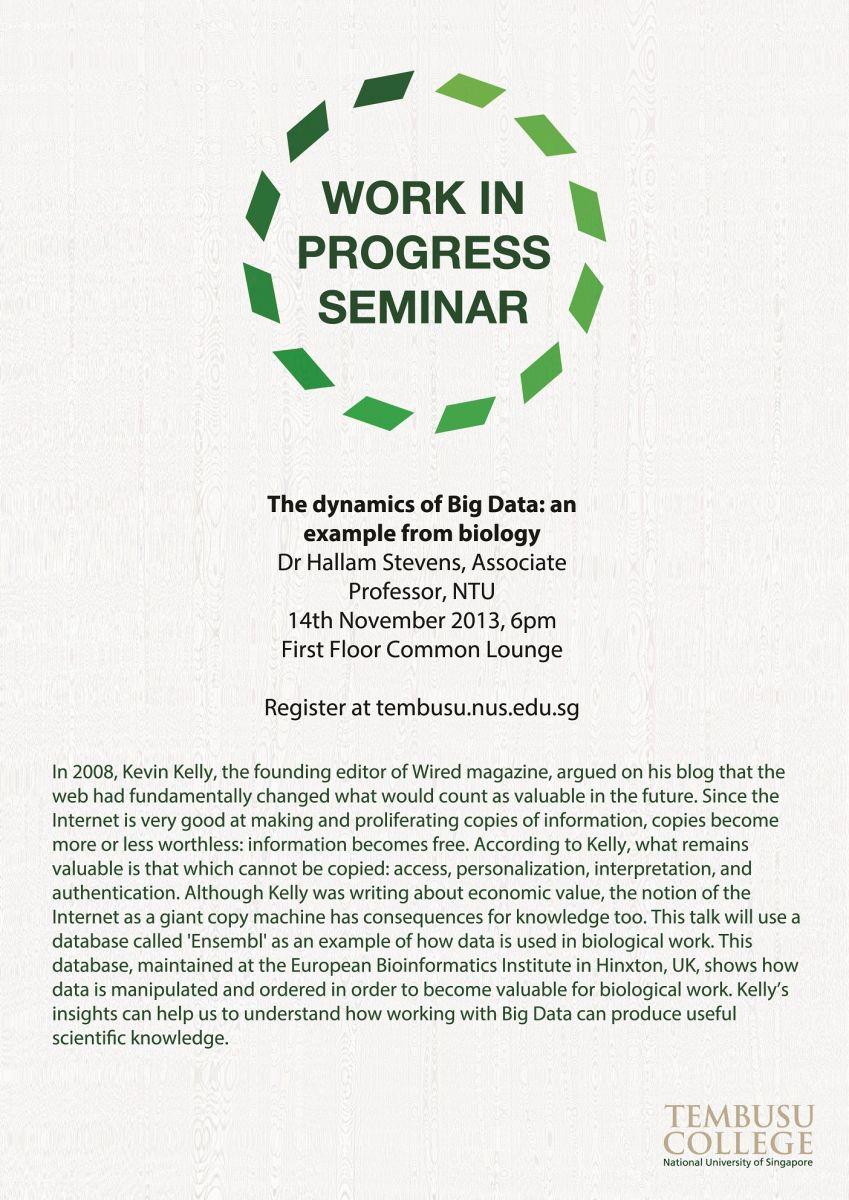
Work in Progress Seminar
The dynamics of Big Data: an example from biology
Dr Hallam Stevens, Associate Professor, NTU
14th November 2013, 6pm
First Floor Common Lounge
Register at dev-tembusu-nus.pantheonsite.io
In 2008, Kelvin Kelly, the founding editor of Wired magazine, argue on his blog that the web had fundamentally changed what would count as valuable in the future. Since the Internet is very good at making and proliferating copies of information, copies become more or less worthless: information becomes free. Accordingly to Kelly, what remains valuable is that which cannot be copied: access, personalization, interpretation, and authentication. Although Kelly was writing about economic value, the notion of the Internet as a giant copy machine has consequences for knowledge too. This talk will use a database called ‘Ensemble’ as an example of how data is used in biological work. This database, maintained at the European Bioinformatics Institute in Hinxton, UK, shows how data is manipulated and ordered in order to become valuable for biological work. Kelly’s insights can helps us to understand how working with Big Data can produce useful scientific knowledge.


